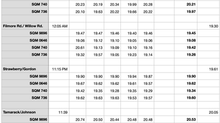Measuring Darkness In Isolation
- Chuck Bueter
- Apr 17, 2020
- 2 min read
Now, while much of the economy and nation are idled, is a good time to quantify the darkness of the night sky. Seize this opportunity to get under the stars and reconnect with the firmament.
For persons around South Bend, IN, I suggest we concentrate on one constellation over the next several months. I'm picking Boötes the Herdsman, which is admittedly low in the evening sky as springtime opens, then gradually is visible higher in the sky as the months segue into summer. As hours pass, the stars will appear generally to move from east to west, just as the sun and moon do.

Boötes was the constellation I used for the Night Values report, which assessed the night sky over Rum Village Park and Elbel Park. This gives us a reference for comparing the night then during normal activity and now during coronavirus inactivity. For simplicity, the black and white star chart below shows the stars down to magnitude=4.9, with the labeled star e Boo being the faintest I could see in 2016. In theory, if my eyes can now see more stars than are on this chart, it's darker.
For simplicity, new observers could simply use this chart and either add stars not shown or strike through printed stars not seen. I recommend you print this chart, practice recognizing a few small groups of faint stars beyond the drawn lines, then go out at night with this chart and compare to your actual sky. It's that easy.

If you can see stars fainter than e Boo, refer to the star chart Bootes-mag<5-chart-labeled.png; if your skies are seriously darker, use the star chart Bootes-mag<6-chart-labeled.png. The numbers in red are the magnitudes without the decimal point included to avoid confusing the decimal point with a star. For example, 49 means star magnitude equals 4.9.


In April, you may have to wait until 1 AM for Boötes to get high in the sky. You want the stars to be high up so that you are looking through less atmosphere than when the stars are lower toward the horizon. A few months later, you won't have to go out so late at night for the same view.
Boötes is a summer constellation featured by Globe at Night for its 2020 surveys on May 14-23, June 13-22, and July 12-21. Globe at Night has interactive sky and magnitude charts for Boötes at https://www.globeatnight.org/finding/bootes. Then comes the best part--you get out and look up! Please submit your observations--naked eye or with SQM--directly to the Globe at Night campaign. If you're near a South Bend park, I welcome your results, too.
Another reason to choose Boötes, whose bright star Arcturus is found by "arcing (through the handle of the Big Dipper) to Arcturus," is that it shines next to Corona Borealis, the one friendly crown-shaped thing in the news these days. On Earth Day, 2020 April 22, shafts of light from the Lyrid meteor shower may even pierce the crown in the early hours of that Wednesday.
On April 22, 2020, the next fifty years of Earth Days will launch with a new moon. Launch with it. Make it your night to get out under the stars and start a new phase. Carpe' noctem.
Wishing you clear skies and good health.









































